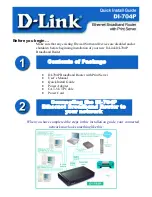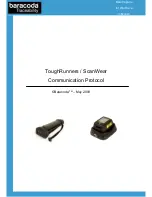
ATU-R130 ADSL Ethernet Router User’
s Guide
39
25— SMTP (simple mail transfer protocol) server
80— HTTP (World Wide Web) server
?
Specify both a destination address (or range) and a destination port (or range) if you
want this translation rule to apply to accesses to the specified server type at the
specified IP address or network.
7.
Follow steps 7-12 under "The napt rule" on page 33 to submit your changes.
The bimap rule: Performing two-way translations
{
XE "BIMAP NAT flavor"
}{
XE "NAT:BIMAP flavor"
}
Unlike the other NAT flavors, the bimap
flavor performs address translations in both the outgoing and incoming directions. Figure
shows the fields used to establish a bimap rule.
Figure 29. NAT Rule – Add Page (bimap Flavor) { XE "NAT Rule— Add page - bimap" }{ XE
"Pages:NAT Rule Add - bimap" }
Follow these instructions to add a bimap rule (see steps 1-4 under "The napt rule" on page 33
for specific instructions corresponding to steps 1 and 2 below):
1.
Display the NAT Rule – Add Page, select
BIMAP
as the Rule Flavor, and enter a
Rule ID.
2.
Select the interface on which this rule will be effective.
3.
In the Local Address field, type the private IP address of the computer to which you
are granting external access.
4.
In the Global Address field, type the address that you want to serve as the publicly
known address for the LAN computer.
5.
Follow steps 7-12 under "The napt rule" on page 33 to submit your changes.
The pass rule: Allowing specific addresses to pass through untranslated
You can create a pass rule to allow a range of IP addresses to remain untranslated when
another rule would otherwise do so.
{
XE "PASS - NAT flavor"
}{
XE "NAT:PASS flavor"
}
















































